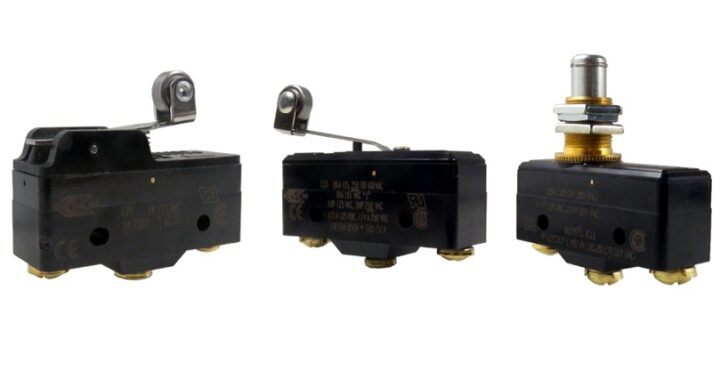Proximity Sensor vs Photoelectric Sensor: Compared Technically!

As technology continues to advance, there are more options than ever before for sensing and detecting objects in a variety of applications. Two of the most common sensor types used in industrial and automation settings are proximity sensors and photoelectric sensors. In this article, we’ll compare these two types of sensors in detail, looking at their technical differences and similarities and providing guidance on which one might be best suited for your specific needs. Whether you’re a professional in the industry or simply interested in learning more about sensors, this article is a must-read.
Differences between proximity sensor and photoelectric sensor
The differences between proximity and photoelectric sensor are the following:
1. Definition
The proximity sensor is a type of device that detects an object when the object approaches the detection range and boundary of the sensor. There is no physical contact between the object and the sensor. Inductive proximity sensors detect only metal objects. Capacitive proximity sensors can sense both metallic and non-metallic objects. The photoelectric sensor is an electrical device that responds to a change in the intensity of the light falling upon it.
2. Method of detection
A proximity sensor uses an electromagnetic field and detects an object without physical contact. Then, converts this information into an electrical signal.
A photoelectric sensor uses light and detects the object without physical contact. The optical signal transmitted from the emitting part of the sensor is modified by being reflected, transmitted, absorbed, etc., by the sensing object and is then detected by the receiving part of the sensor to generate a corresponding output signal.
3. Sensing range
The proximity sensor has a short sensing range compared to the photoelectric sensor. The sensing range of a proximity sensor is within 1 in. (25,44 mm). The sensing range of a photoelectric sensor is up to 800 ft. (243,8 m)
4. Target material
The proximity sensor detects metallic and non-metallic objects. On the other hand, the photoelectric sensor can detect objects of any material provided they affect the optical beam. This means that a photoelectric sensor can be used to detect virtually any object, including glass, plastic, wood, and liquid. (Whether transparent or opaque, small or fast, perforated or shiny, uneven or wrapped in film, near or far.)
5. Response time
The use of an optical beam for detection and complete electronic circuitry makes the photoelectric sensor respond in microseconds so that it can be easily used on a high-speed production line. The response time is extremely fast because light travels at high speed and the sensor performs no mechanical operations because all circuits are comprised of electronic components. The proximity sensor has a little bit longer response time compared to the photoelectric sensor. It detects objects in milliseconds.
6. Object markings
The photoelectric sensor can detect invisible markings on products. The proximity sensor cannot detect the markings.
7. Cost
The average price of a proximity sensor is lower than a photoelectric sensor. The photoelectric sensor has lots of types and various detecting methods. That’s why the average price is expensive.
8. Sensor size
The size of a photoelectric sensor is smaller than a proximity sensor.
9. Color identification
Since the reflection and absorption characteristics vary with the object color for a specified incident optical wavelength, various colors can be detected with a photoelectric sensor as the difference in optical intensity. The proximity sensor cannot identify the colors.
10. Dust and dirt
The photoelectric sensor has the drawback that if the lens surface is covered with dust or dirt and light transmission is obstructed, detection may not be possible. The proximity sensor does not have this problem.
11. Resolution
The incredibly high resolution achieved with the photoelectric sensor derives from advanced design technologies that yielded a very small spot beam and a unique optical system for receiving light. These developments enable the detection of very small objects, as well as precise position detection. The proximity sensor can detect larger objects.
12. Adjustment
Positioning the beam on an object with a photoelectric sensor is simple with models that emit visible light because the beam is visible. The adjustment of a proximity sensor is a bit complex.
In conclusion, proximity sensors and photoelectric sensors are two commonly used types of sensors in industrial and automation settings. While they share similarities in that they both detect objects without physical contact, there are several technical differences between the two. Proximity sensors have a shorter sensing range and can only detect metallic and non-metallic objects while photoelectric sensors have a longer sensing range and can detect objects of any material that affects the optical beam. Additionally, photoelectric sensors have faster response times and can detect invisible markings and colors but are more expensive and may be obstructed by dust and dirt. Ultimately, the best sensor for a specific application will depend on the specific needs and requirements of that application.

 Types of Timer Relays and Their Applications
Types of Timer Relays and Their Applications  Relay Applications: Real-Life And Industrial Examples
Relay Applications: Real-Life And Industrial Examples  Types of Micro Switches and Their Applications
Types of Micro Switches and Their Applications  Best Voltage Testers for Home Use: 2023 Edition
Best Voltage Testers for Home Use: 2023 Edition  Advantages of Transducers for Optimal Measurement
Advantages of Transducers for Optimal Measurement  Advantages of Infrared Sensors: Improved Accuracy and More
Advantages of Infrared Sensors: Improved Accuracy and More